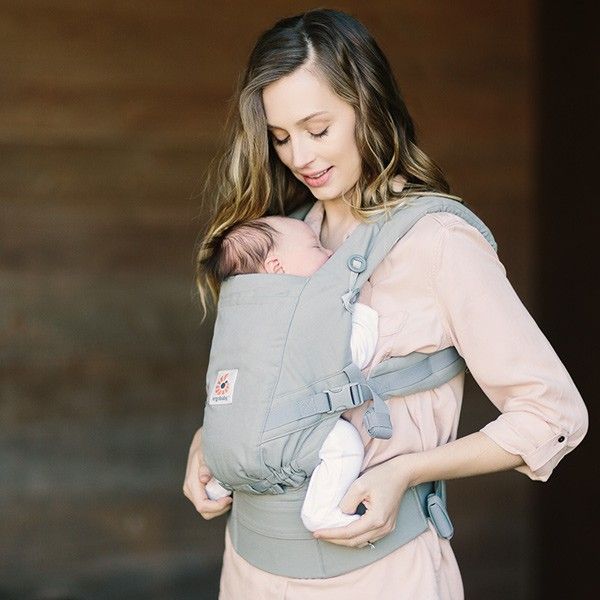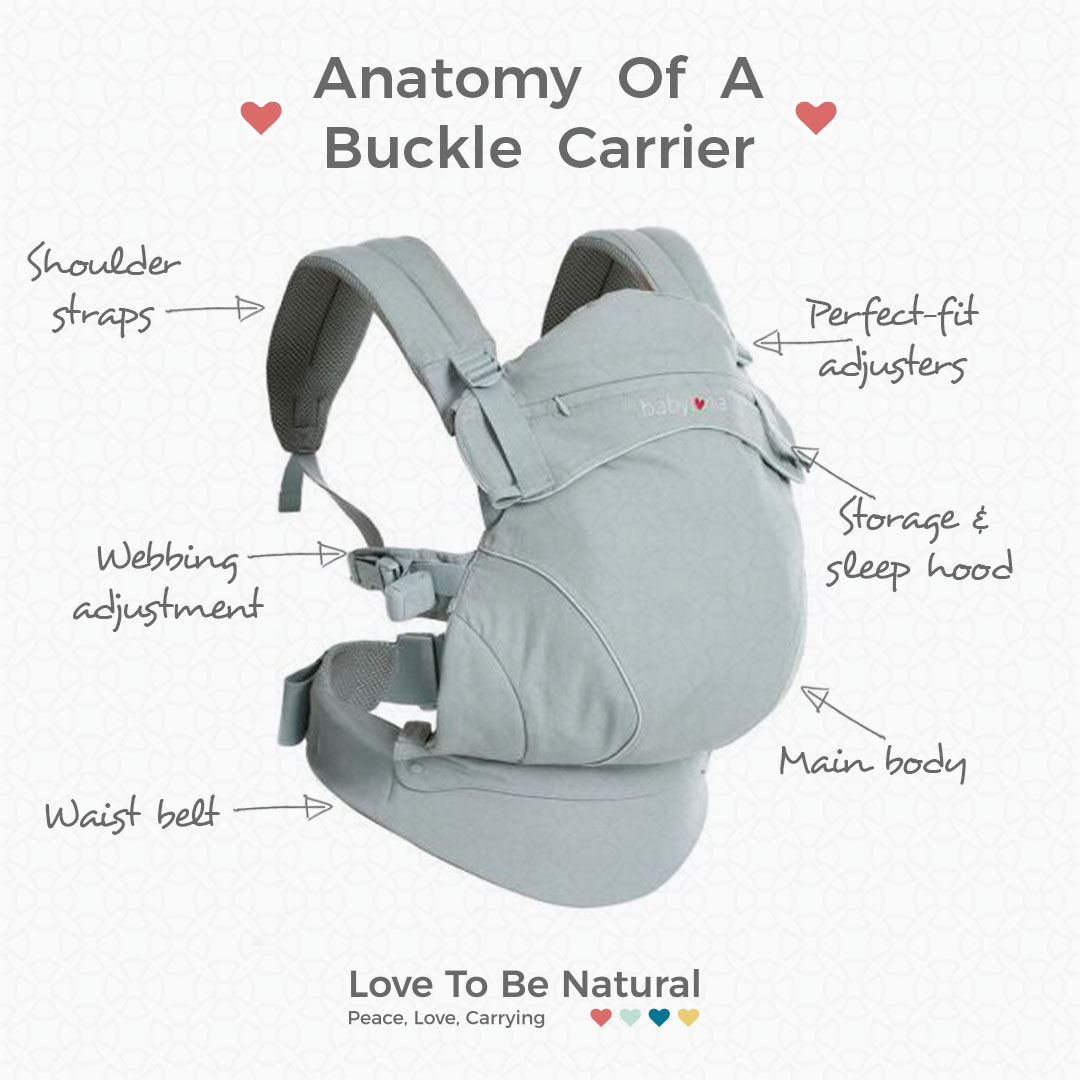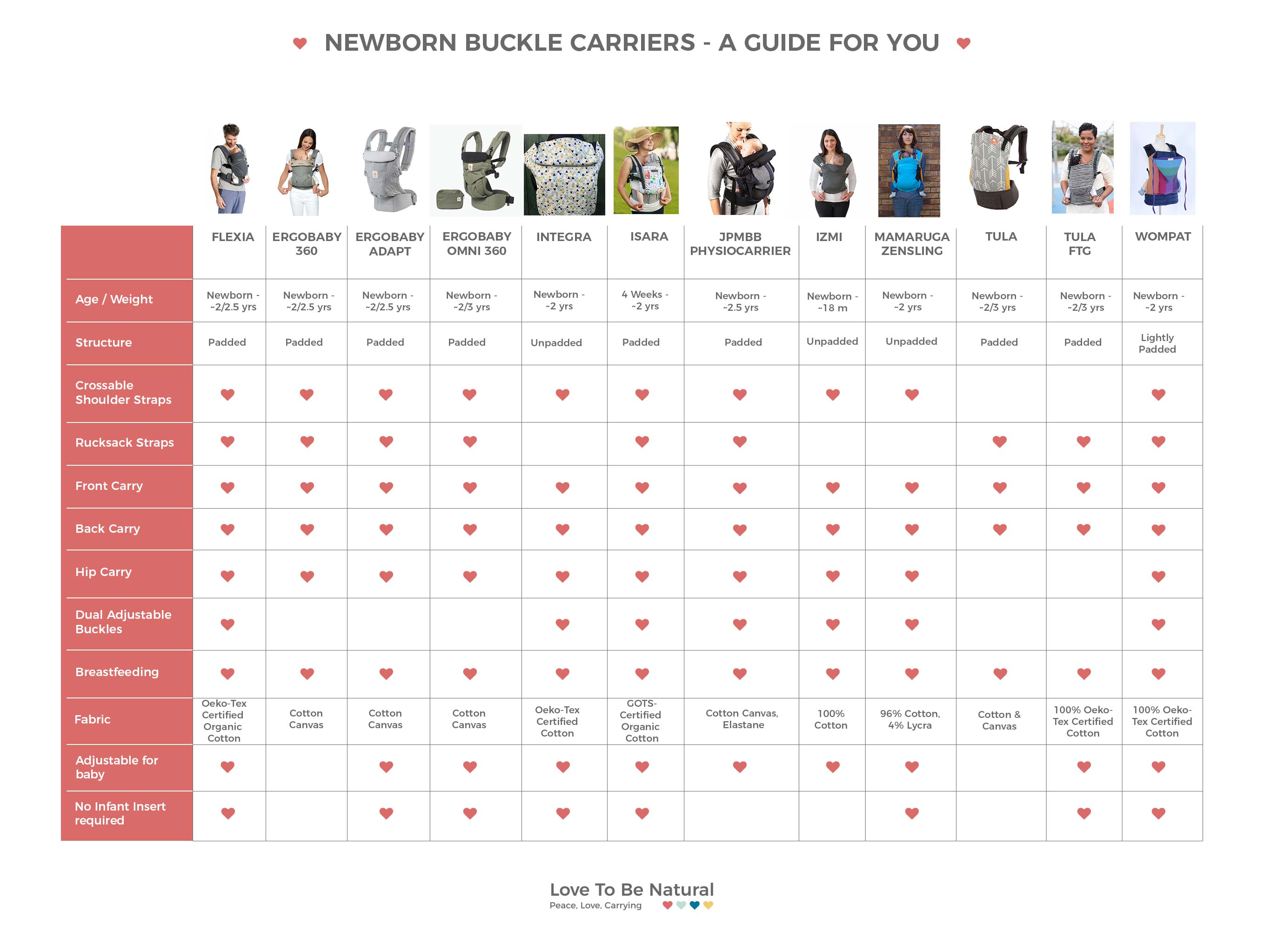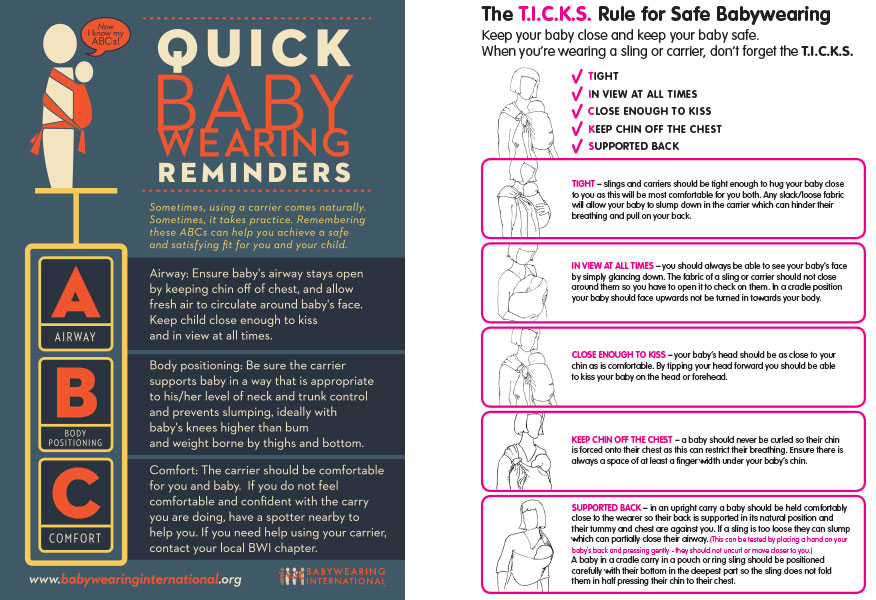
The unanswered questions going through your mind as a new parent are many, and when it comes to baby carriers we understand that the choice can be overwhelming. Which is the best sling? Which should you choose? Will it be comfortable? Will it be easy to use? Is the most expensive baby carrier the best baby carrier?
Ultimately, the best carrier for you is one that your little one and you both find comfortable. There are a few things to take into account. You can help to narrow your choice down by considering:
- your budget;
- your lifestyle;
- the age of your baby, and
- who will be using the sling.
A really good baby carrier (also known as a soft-structured carrier) will allow you to carry your little one in such a way as to be respectful of their physiology, whilst at the same time being comfortable for you. Their back should be soft, yet supported. Not stiff, not rigid. Their legs should be supported all the way along the thigh, to the knee pit. Their bottom should sit lower than their knees. Traditionally, this is called the ‘spread squat position’ or ‘M’ position. It is often defined now as the ‘hip healthy position’. Their head should be free, clear and unobstructed.

Soft Structured or buckle carriers are versatile and relatively easy to use and to learn how to do so. The basic design is a front panel, where baby will be ‘seated’, a waist strap and two padded shoulder straps, all of which are adjustable to achieve a comfortable fit, and secure with buckles.
Buckle Carriers are supportive and baby can be carried on your front or back, and sometimes on the hip too; they're probably the most popular design of baby carrier.
Most carriers are structured - in other words the waist and shoulder areas are padded with either foam or firm padding. Examples of structured carriers are the Tula Free To Grow Baby Carrier and the Ergobaby Omni Carriers.
Unstructured carriers are fewer in number, but are still a very popular option, mainly because they tend to be small and light. They tend to have no padding in the waist section, and only very lightly padded shoulders (if at all), the best example being the Integra Baby Carrier.
With some designs, the shoulder straps can cross on the back to provide extra support (X-shape on the back). Other designs offer ‘rucksack-style-straps’, and some even offer both.
The Best Buckle Carrier For Newborns
Newborn-suitable buckle carriers - one of the most often talked-about sling topics. Whether you like to use buckles with a newborn or not, it's fair to say that they do, quite rightly hold an appeal for many parents, and in the last few years there have been several new carriers produced which are really rather excellent.
Given the huge choice of newborn buckle carriers, we've come up with this helpful infographic to let you see the relevant features of each, to help you make an informed choice.

Not all newborn buckle carriers will fit your newborn. They are all suitable ‘from’ newborn, however as newborns vary so very much, a carrier that fits one newborn may not fit another. They depend very much on factors other than weight, including dimensions, physiology and build.
The best buckle carrier for a newborn is one that fits them well, supports and respects their physiology and does so safely. It should be comfortable for you, and just your style.
Are Buckle Carriers Easy To Use?
Buckle Carriers are amongst the most popular sling styles. They tend to be gender-neutral and can be used by wearers of different builds, with ease. Soft Structured or buckle carriers are versatile and relatively easy to learn. The basic design is a front panel, where baby will be ‘seated’, a waist strap and two padded shoulder straps, all of which are adjustable to achieve a comfortable fit, and secure with buckles. Many buckle carriers can be used from newborn, some can be used from 3-4 months upwards.
Are Buckle Carriers Safe To Use?
Carrying your baby in a sling is a beautiful way to bond and make a deep connection. It also enables you to get on with the everyday - whether it's UN-style negotiations with other children, or just a hot cup of tea, having your baby in a sling or carrier can make that all so much easier.
Carrying your newborn in a sling is perfectly safe when practiced with common sense and understanding. As with all things in life a cupful of knowledge and a sprinkling of common sense is the best recipe to ensure happy, safe carrying for you and your little one. Always use a quality sling or carrier and ensure you read the instructions on its use.
As a highly trained and experienced Carrying Consultants, we can help answer any questions regarding sling safety that you have, and I'm always happy to help you on your carrying journey. We promote slings and carriers that provide optimal comfort for your baby and for you. We stock slings and carriers that provide great support and the best possible positioning for your baby.
Always make sure your carrier is tied nice and snug to you; this should ensure baby is seated high (close enough to kiss) with their back soft, but very much supported. Once baby is in the carrier, look at their profile - it should be capital ‘J’ shaped (see photo below), and NOT ‘C’ shaped. Baby’s face should be visible and clear of the carrier.


Examples of buckle carriers suitable for newborns for which an insert is not required include:
- Babylonia Flexia Baby Carrier;
- Integra Baby Carrier;
- Isara One Carrier;
- Isara Baby Carrier (from around 4 weeks);
- Boba X;
- Ergobaby Adapt
- Ergobaby Omni
- Mamaruga Zensling
- Wompat Carrier;
- Tula Free To Grow Baby Carrier.
Examples of buckle carriers suitable for newborns for which an insert is required include:
 5,467 Reviews
5,467 Reviews